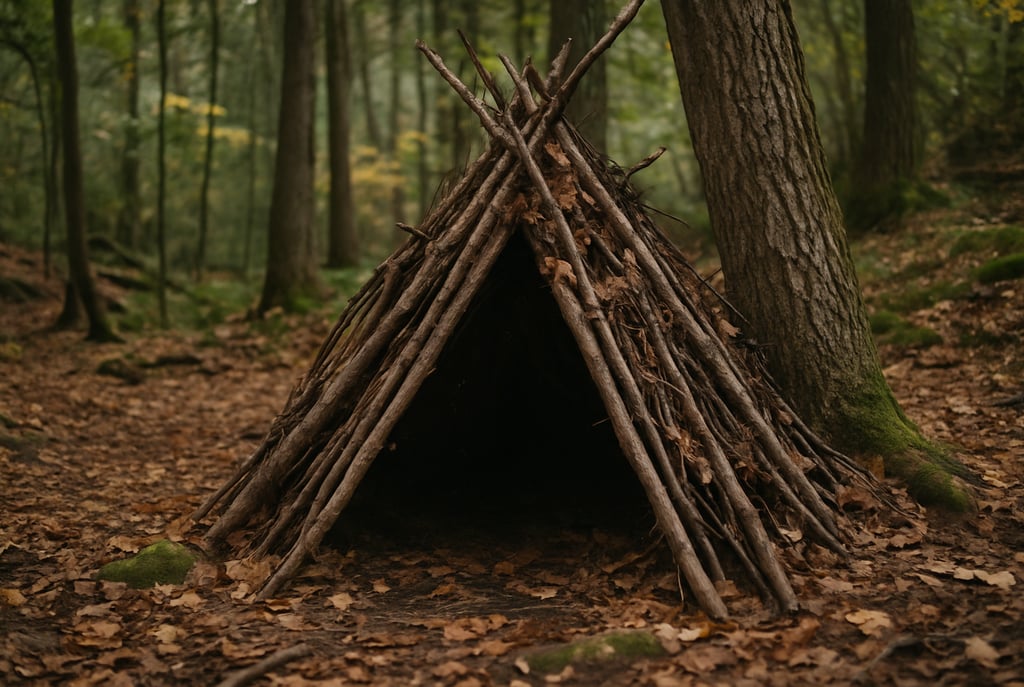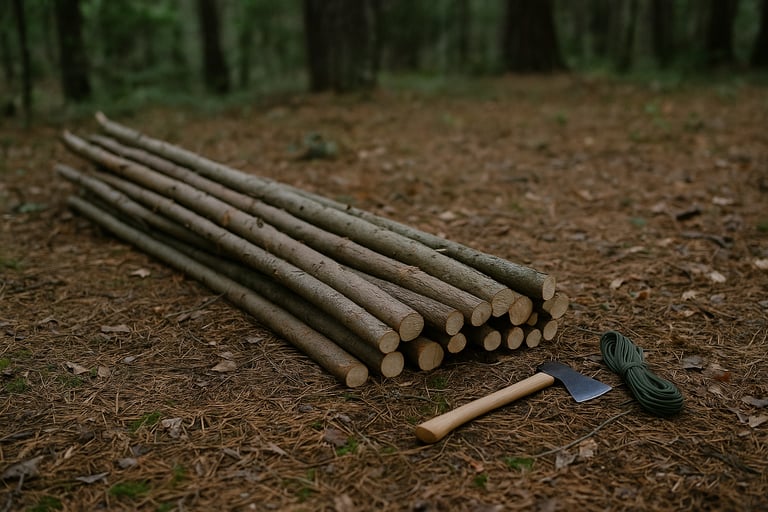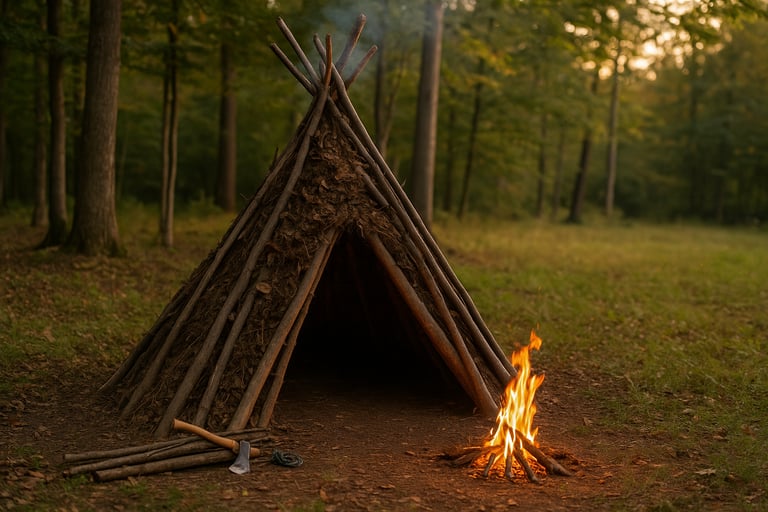How to Build a Teepee Shelter: A Classic Survival Shelter for All Seasons
Meta Description: Learn how to build a teepee shelter using natural materials for wilderness survival. This step-by-step guide covers setup, insulation, and fire safety for a sturdy, all-weather teepee shelter.


How to Build a Teepee Shelter: A Classic Survival Shelter for All Seasons
The teepee (or tipi) shelter has stood the test of time as one of the most effective and adaptable survival shelters in history. Used by Native American tribes and outdoor survivalists alike, it combines simplicity with strength, providing excellent ventilation, insulation, and protection from the elements.
Whether you’re building one for an overnight stay in the wilderness or as a semi-permanent camp setup, a teepee shelter is a smart and rewarding choice. Let’s walk through what you need, how to set it up, and the best ways to make it warm, dry, and functional.
Why Choose a Teepee Shelter in the Wild?
Teepee shelters are incredibly versatile and can be built with minimal tools and materials. Their cone shape naturally sheds rain, snow, and wind, making them reliable in all kinds of weather. Unlike flat-roofed shelters that can collapse under snow or heavy rain, a properly constructed teepee channels the weight downward and stays upright with ease.
Another big advantage is that the shape allows smoke from a small fire to rise and escape through the top, which means you can safely stay warm inside if you build it correctly.
Compared to quick solutions like a tarp shelter or a poncho shelter, a teepee offers better ventilation and long-term livability. Its conical shape and interior fire-friendly design make it a strong choice for multi-day survival in changing weather.
What You'll Need to Get Started
To build a wilderness teepee shelter, start by finding at least 6 to 10 long, straight poles — around 10 to 15 feet in length — depending on the size of shelter you want. These can be stripped saplings or branches, and they’ll form the frame.
You’ll also need something to wrap around the frame. Natural options include bark sheets, evergreen branches, large leaves, or animal hides. In a more modern setup, you could use a tarp, emergency blanket, or even a rain poncho if you’re improvising. Finally, you’ll need cordage, vines, or strong twine to bind the poles at the top.
Step-by-Step: How to Build a Teepee Shelter
Start by selecting a flat, open area that’s not prone to flooding and has good airflow. Lean three poles together to form a tripod — this will be your base. Lash them securely near the top, then begin adding additional poles evenly around the tripod structure until you have a full cone shape.
Once the frame is stable and balanced, begin layering your covering material. If using natural elements like evergreen boughs, overlap them from the bottom up, like shingles, to shed rain effectively. If using a tarp, wrap it tightly around the structure and secure it with cordage or weight it with stones at the base.
Leave a small gap at the top for smoke to escape, and make sure to build a simple entrance on one side, using a flap or overlapping material for a door.
Making It Comfortable, Weatherproof, and Fire-Ready
If you plan to stay in your teepee shelter overnight or for multiple days, add extra insulation. You can line the inside walls with dry leaves, pine needles, or moss. The floor can be padded with evergreen branches or dry grass to keep moisture and cold from seeping in.
For warmth, a small fire pit can be placed in the center — but only if your shelter has enough ventilation at the top and is made of non-flammable materials. Never build a fire inside if you’ve used synthetic fabrics, plastic tarps, or other materials that could ignite.
If rain is in the forecast, add a rain cap or overlapping patch above the smoke hole, angled to let smoke out but rain slide off.
To make the floor warmer, consider building a bough bed shelter inside your teepee for added insulation from the cold ground. If your materials or time are limited, you can also blend features from a debris hut to help trap warmth and block drafts.
When and Why to Use a Teepee Shelter in a Survival Situation
A teepee shelter is one of the best choices for staying put during an extended wilderness stay. If you have time, access to long poles, and suitable cover material, this design is much more durable and comfortable than a quick lean-to or tarp setup.
It’s ideal in cooler weather because of its ability to trap and circulate heat. Plus, the central fire option gives it a huge advantage over low-profile shelters. Whether you’re camping for days or riding out an unexpected emergency, building a teepee shelter is a great way to combine tradition, survival smarts, and long-term comfort.




© 2025. All rights reserved About | Privacy Policy | Terms and Conditions | Affiliate Disclosure | Disclaimer


